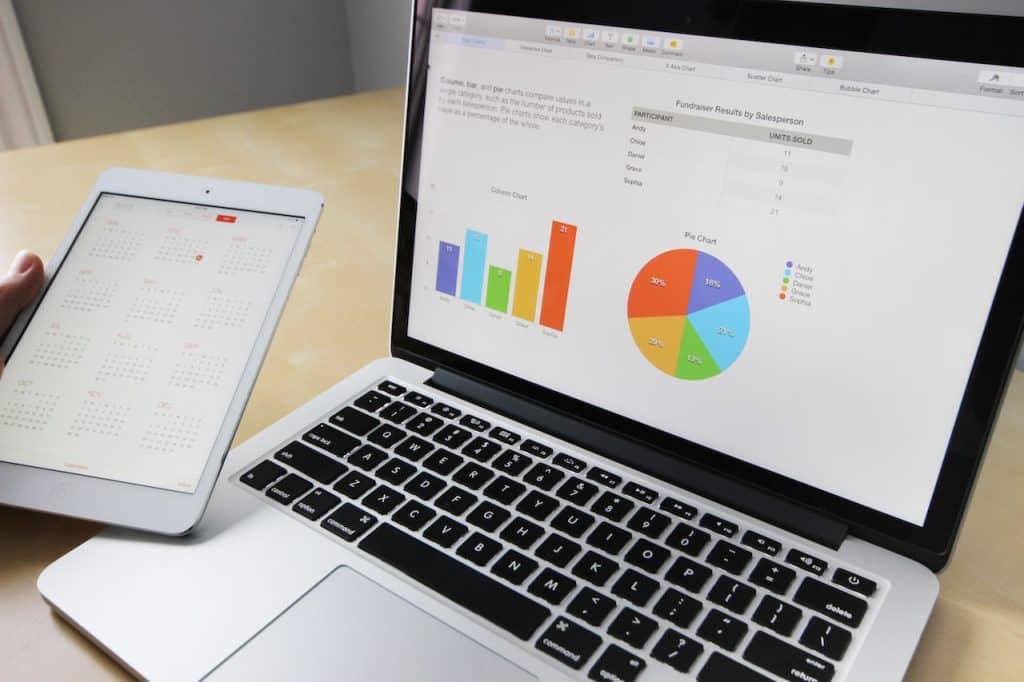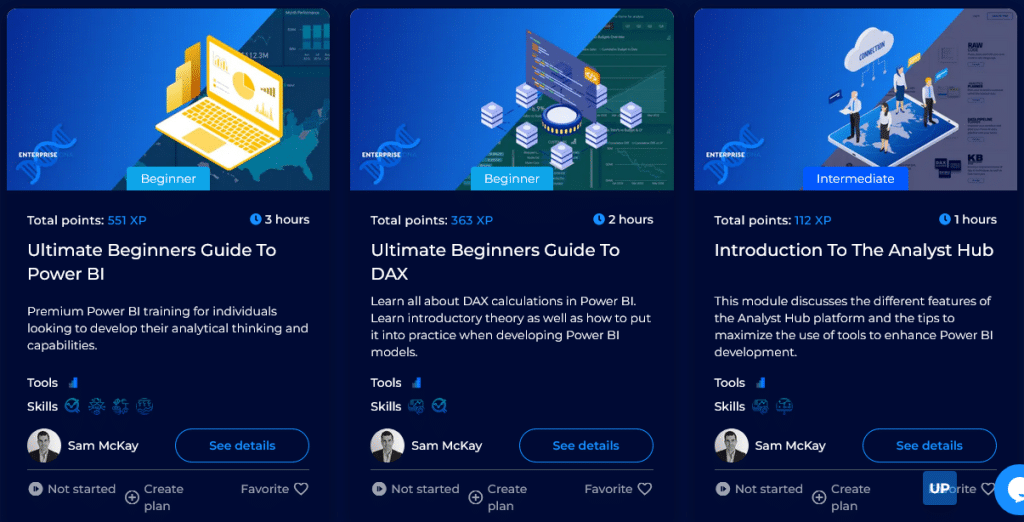Breaking into the field of data analysis might seem intimidating, especially if you lack experience. But fear not! There are pathways and strategies that can help you kickstart your career path as a data analyst.
To become a data analyst with no experience, focus on building relevant skills to add to your portfolio, and start learning proven, real-world techniques to share with potential employers.
Data analysis typically involves collecting, interpreting, and extracting valuable insights from big data that can enable organizations to make better-informed decisions. With the right targeted educational resources and practical experiences, you too can make an impact in this rapidly growing field.
This article will guide you through actionable steps to land an entry-level data analyst job while showcasing how various resources can assist you in building the necessary skills and knowledge.
Building Relevant Skills

If you don’t have any prior experience in the field, then you need to develop the necessary data analytics skills and knowledge.
This section covers some effective ways to build relevant skills, providing you with a strong foundation for a successful career in data analysis.
Key Skills for Data Analysts

To excel in your role as a data analyst, it’s important to possess some essential data analyst skills:
- Data management: Data analysts must have strong skills in data management, including data cleansing, integration, and organization. This involves being able to work with large datasets, different file formats, and data storage systems.
- Statistical analysis: Data analysts must have a solid understanding of statistical methods and techniques to analyze data and draw meaningful insights. This includes being able to apply statistical models, regression analysis, hypothesis testing, and data visualization.
- Programming skills: You don’t need to be a computer scientist, but data analysts do need to have a strong programming foundation and be proficient in at least one programming language, such as Python or R. They should be able to write efficient and clean code to manipulate and analyze data.
- Business acumen: Business analysts must be able to understand the business context of their analysis and how it impacts the organization. They need to be able to translate data insights into actionable recommendations for stakeholders.
- Communication skills: Good communication ability is a great soft skill to have. Data analysts must be able to clearly communicate their findings to both technical and non-technical stakeholders. They should be able to present complex information in a concise and understandable manner.
- Data visualization: Data analysts need to have strong data visualization skills to create compelling visual representations of their findings. This includes being able to use tools such as Tableau, Power BI, or Excel to create charts, graphs, and dashboards.
- Problem-solving: Data analysts need to have strong problem-solving skills to be able to identify patterns and trends in data, and develop solutions to complex data problems.
Make Use of Online Courses and Certifications

Online courses and professional certificates are a good first step to acquiring the skills required for data analysis. There are numerous online courses, bootcamps, tutorials, and certifications available in the field of data analytics on websites like Udemy, Coursera, and Enterprise DNA.
These courses offer structured and project-based learning, allowing you to hone your skills and gain practical experience.
Examples of some courses worth enrolling in include:
- Coursera’s Data Analysis and Visualization Foundations Specialization: This specialization, which is offered by IBM, consists of five courses that cover the fundamentals of data analysis and visualization using tools such as Excel, Tableau, and R. Topics include data manipulation, regression analysis, and data-driven visualization.
- DataCamp’s Data Analyst with Python track: This track is designed to teach you the foundational skills needed to become a data analyst using Python. The track covers topics such as data manipulation, data visualization, and statistical analysis using Python libraries such as pandas, Matplotlib, and seaborn.
- LinkedIn’s Become a Data Analytics Specialist: This course covers the basics of statistics needed for data analysis. Topics include probability, hypothesis testing, frameworks, and regression analysis.
- HackerRank’s Data Structures practice: This resource provides a series of coding challenges to help you improve your skills with data structures. The challenges cover a range of topics, including algorithms, data structures, and math.
- EnterpriseDNA’s Power BI Data Analyst pathway. This is a tried and proven model of teaching that will build a broad range of skills essential for you to confidently pass the PL-300.
Try Some Hands-On Projects

Building a portfolio of hands-on projects is crucial for showcasing your technical skills, creativity, and ability to draw insights from data.
Working on real-world projects enables you to demonstrate your competencies to potential employers and helps bridge the gap between theoretical knowledge and practical application. To create an impressive portfolio, consider:
- Data visualization: Choose a dataset of interest and create a set of visualizations that help tell a story. Use tools such as Tableau, Power BI, or Matplotlib to create charts, graphs, and dashboards that highlight key insights.
- Text analysis: Choose a corpus of text, such as customer reviews or social media posts, and use natural language processing techniques to analyze the text. This can include sentiment analysis, topic modeling, and text classification.
- Data cleaning and preprocessing: Choose a messy dataset with missing values, duplicate records, or inconsistent data types, and clean and preprocess the data. This involves techniques such as imputation, normalization, and encoding categorical variables.
- Web scraping: Choose a website of interest and use web scraping techniques to collect data from the site. This can involve using tools such as BeautifulSoup or Scrapy to extract data from HTML tags, or using APIs to collect data from web services.
- Data storytelling: Choose a dataset of interest and create a narrative around the data. Use data visualizations, text, and multimedia elements to tell a compelling story about the data and its implications.
By completing these projects, aspiring data analysts can demonstrate their technical skills, creativity, and ability to work with data in a meaningful way.
Furthermore, these projects can be included in a data analyst portfolio, along with detailed descriptions of the methodologies used and the insights derived from the data.
Network and Join Communities

Engaging with networking and professional communities can provide valuable connections, resources, and opportunities in the data analysis field.
Some ways to develop your network and gain exposure include:
- Attend industry conferences, seminars, or workshops. This is a great way to network with other data analysts and learn about the latest trends and techniques in the field. Some popular data science conferences include the Data Science Summit, Strata Data Conference, and Predictive Analytics World.
- Join online forums or discussion groups. For example, Discord and Reddit have numerous communities dedicated to data science. They’re great places to keep up with industry news and meet other aspiring data analysts and data scientists.
- Connect with professionals in the field through platforms like LinkedIn, Meetup, and Kaggle. By building relationships with other professionals in the field, you can learn about job opportunities, gain new insights and knowledge, and establish yourself as an expert in the industry.
Now it is time to create your portfolio!
Creating a Strong Portfolio

When you’re starting out as a data analyst with no experience, building a strong portfolio is essential for showcasing your skills, creativity, and ability to draw insights from data.
It will help you establish credibility and demonstrate the projects you’ve previously worked on, even if they’re personal or self-initiated projects. Your portfolio should highlight:
- Projects you’ve completed: Include a variety of projects in your portfolio to display your hands-on experience and expertise in different types of analysis. It doesn’t have to be anything overly complicated. Some examples of basic projects you might showcase include scraping data from websites and cleaning data. Make sure to provide context for each project, such as the problem you were trying to solve, the process you followed, and the insights you derived from your analysis.
- Transferable skills: These are skills you’ve gained from your previous experiences, even if they’re not directly related to data analysis. Some examples of transferable skills include experience with Microsoft Excel, statistical analysis, or programming languages like R or Python.
By incorporating these elements into your portfolio, you’ll be able to effectively showcase your skills, creativity, and ability to work with data, even without prior experience as a data analyst.
Data Analyst Job Responsibilities

Before you start applying for data analyst positions, you should familiarize yourself with the day-to-day responsibilities of data analysts as well as the tools of the trade.
In this section, we’re going to break down the job responsibilities for an entry-level data analyst role, key skills you should know, and some popular tools used by data professionals.
Entry-Level Data Analyst Job Responsibilities
As someone starting at an entry-level, your primary role will likely be to provide valuable insights for decision-making by gathering, cleaning, and analyzing data.
Job descriptions will vary, but a few main responsibilities include:
- Collecting and organizing data: This involves gathering relevant data from various sources and organizing it in a structured format for analysis.
- Data cleaning and preprocessing: You will need to clean and preprocess the data by removing inconsistencies, errors, and duplicates to ensure that the data is accurate and ready for analysis.
- Analyzing data: You will need to use statistical techniques and software tools to analyze the data and extract insights.
- Creating reports and visualizations: You will need to present the insights and findings using charts, graphs, and other visual aids.
- Communicating findings: You will need to communicate the findings to stakeholders and make recommendations based on the insights.
- Collaborating with team members: You will need to work with other members of the team to ensure that projects are completed on time and to a high standard.
- Continuous learning: You will need to keep up-to-date with new techniques, technologies, and trends in the field of data analysis to ensure that your skills remain relevant and effective.
Tools Data Analysts Use
There are several popular tools used by full-time data analysts. Familiarizing yourself with these tools will increase your efficiency and effectiveness:
| Tools | Description |
|---|---|
| Excel or Google Sheets | Spreadsheets are widely used by data analysts to perform basic data analysis tasks such as sorting, filtering, and aggregating data. They are also used for data visualization through the use of charts and graphs. |
| Python | Python is a popular programming language used for data analysis and data science. It has a large number of libraries and tools designed specifically for data analysis, such as NumPy, pandas, and Matplotlib. |
| R | R is a programming language and environment used for statistical computing and graphics. It has a wide range of packages specifically designed for data analysis and visualization. |
| Tableau | Tableau is a data visualization software used by data analysts to create interactive and visually appealing dashboards and reports. It enables data analysts to create charts, graphs, and maps to represent data clearly. |
| Power BI | Power BI is a business analytics service that provides interactive visualizations and business intelligence capabilities with an interface simple enough for end users to create their own reports and dashboards. |
| SQL | Structured Query Language (SQL) is a programming language used to manage and manipulate relational databases. Data analysts use SQL to extract data from databases, perform data cleaning and data manipulation, and conduct basic statistical analysis. |
Job Search Strategies

Once you’ve built your skills and created a strong portfolio as a data analyst, the actual fun begins—it’s time to start looking for job opportunities! But how do you find work when you don’t have any experience?
In this section, we’ll explore some job search strategies that can help you land your first job as a data analyst. From leveraging online job boards to networking with industry professionals, several strategies can help you stand out in a competitive job market.
Leveraging Online Job Platforms
Online job platforms can be a treasure trove of opportunities for aspiring data analysts and they’re a great place to connect with recruiters in the industry. Start by creating profiles on popular job search websites like Indeed, LinkedIn, and Glassdoor.
Use relevant keywords such as “entry-level data analyst” and “data analyst internships” to find suitable job postings. Set up job alerts for these searches to receive notifications of new opportunities.
Additionally, consider joining niche job boards specific to data analytics, such as Kaggle Jobs and iCrunchData. These platforms cater to the data science community, increasing your chances of finding relevant positions.
What about your CV or resume?
Tailoring Your Resume and Cover Letter
Don’t be afraid to tailor your resume and cover letter to specific jobs. Be sure to emphasize transferable skills, certifications, and any relevant projects in your application materials.
Here are a few essential elements to include in your resume:
- Qualifications: Put a strong emphasis on relevant courses and industry certifications you have successfully completed. Having a bachelor’s degree or higher in tech is a great help, but any degree should at the very least get your foot through the door.
- Data analytics projects or volunteer experiences: In lieu of actual work experience, highlight projects or volunteer opportunities that you are particularly proud of. These projects should be relevant to data analysis.
- Skills: Highlight any technical skills you have. This includes experience with programming languages, data visualization tools, and statistics
Your cover letter should also showcase your enthusiasm for the data analytics field and highlight your most significant achievements or projects. Demonstrating a strong understanding of how the company uses analytics can showcase your knowledge and ambition.
Networking Tips
Networking plays a vital role in finding job opportunities and gaining valuable industry insights. Attend conferences, workshops, meetups, and webinars to connect with professionals in the field. Introduce yourself and ask for advice or recommendations, which can lead to potential job referrals.
Additionally, make use of online networking platforms like LinkedIn and Meetup to expand your connections. Join relevant groups, participate in discussions, and share articles or insights to showcase your knowledge and enthusiasm for data analytics.
Acing the Interview

Congratulations! You’ve made it to the job interview stage of your data analyst job search!
This is an exciting opportunity to showcase your skills, experience, and passion for the field. However, job interviews can be nerve-wracking, especially if you’re not sure what to expect; we get it, we know!
In this section, we’ll explore some strategies to help you ace your data analyst job interviews.
From researching the company and the role to preparing for common interview questions and demonstrating your problem-solving skills, these tips will help you feel confident and prepared for your next data analyst job interview.
Preparing for Common Questions
One of the keys to acing a data analyst interview is to prepare for common questions. Start by researching the company and understanding its needs and the industry it operates in.
This will help you tailor your answers for job interview questions and demonstrate your enthusiasm for the role.
Some common data analyst interview questions you may encounter from hiring managers include:
- What is your experience with data analysis and visualization tools?
- Can you describe a challenging project you’ve worked on and how you approached it?
- How do you handle large datasets and ensure data quality?
Practice your answers to these questions and consider how you can highlight your skills and experience, even if you lack direct experience in data analysis.
Also, focus on transferable skills, such as communication, problem-solving, and willingness to learn.
Showcasing Problem-Solving Abilities
As a data analyst, problem-solving is a crucial skill. During the interview, you may be asked to solve a problem or analyze a dataset on the spot. To showcase your problem-solving abilities, follow these steps:
- Understand the question: Take your time to read and understand the problem statement. If unsure, ask the interviewer for clarification.
- Break it down: Break the problem down into smaller, manageable tasks. This will help you stay organized and demonstrate your systematic approach.
- Create a plan: Develop a plan to tackle each task, using your knowledge of data analysis techniques to select the most appropriate approach.
- Execute and adapt: As you execute the plan, be prepared to adapt it based on the results you obtain. This demonstrates flexibility and adaptability.
- Present your findings: Clearly communicate your findings and insights to the interviewer. Use visuals if possible, to make your results easy to understand.
By following these steps, you can confidently showcase your problem-solving skills and stand out in the data analyst interview.
Average Salary Expectations for Entry-Level Positions
It can be uncomfortable to talk about, but it’s an important part of the interview process—how much money is an organization willing to pay you? The salary range for an entry-level data analyst in America can vary depending on the location, your skillset, and the specific company.
According to Glassdoor, the average salary for an entry-level data analyst in the United States is $62,453 per year, as of March 2023. However, the average salary range can range from $43,000 to $89,000 per year, depending on the factors mentioned above.
Indeed also reports similar numbers, with an average base salary of $60,679 per year for entry-level data analysts in the United States, as of March 2023.
It’s important to note that these numbers are just averages and can vary depending on the specific circumstances of the position. But,they should give you a good baseline to work with when starting a data analyst career.
Additionally, these numbers may not take into account other factors, such as bonuses, benefits, and stock options that may be offered by certain companies.
Continuing Professional Development

Continuing professional development is a crucial part of becoming a successful data analyst, regardless of your experience level.
In this final section, we will discuss staying up to date with industry trends and pursuing advanced certifications.
Staying Current with Industry Trends

Keeping up with the latest trends and developments in the field of data analytics is essential for maintaining your competitive edge in the job market. Here are a few ways to stay current:
- Follow relevant blogs and websites focused on data analytics to stay informed about new tools, techniques, and best practices. Examples include Github, Towards Data Science, KDnuggets, and of course, Enterprisedna.co
- Participate in online forums and communities where data analysts discuss and share insights, techniques, and solutions. Platforms like Reddit, Discord, Twitter, and DataTau and our
- Subscribe to relevant newsletters, podcasts, and YouTube channels to stay updated on the latest news and developments in data analytics. For podcasts, check out Data Skeptic, DataFramed, and the Enterprise DNA Podcast. Some good YouTube channels to follow include sentdex and Two Minute Papers.
Pursuing Advanced Certifications

In addition to the foundational skills acquired through beginner and intermediate data analytics certifications and courses, you may consider pursuing advanced certifications to further enhance your credentials and expertise.
As they say, practice makes perfect, which is why we developed “Workouts.” Our data skills workouts are an incredible way for you to practice your skills, communicate with others and get feedback on your work.
Learn about our workouts below:
To sum things up, finding work as a data analyst without experience can be challenging, but it’s not impossible.
By building a strong portfolio, developing in-demand skills, networking with other professionals, and taking advantage of online resources, aspiring data analysts can increase their chances of landing their first job in the field.
It may take time and effort, but with persistence and a commitment to learning, anyone (even you!) can start a career as a data analyst.








